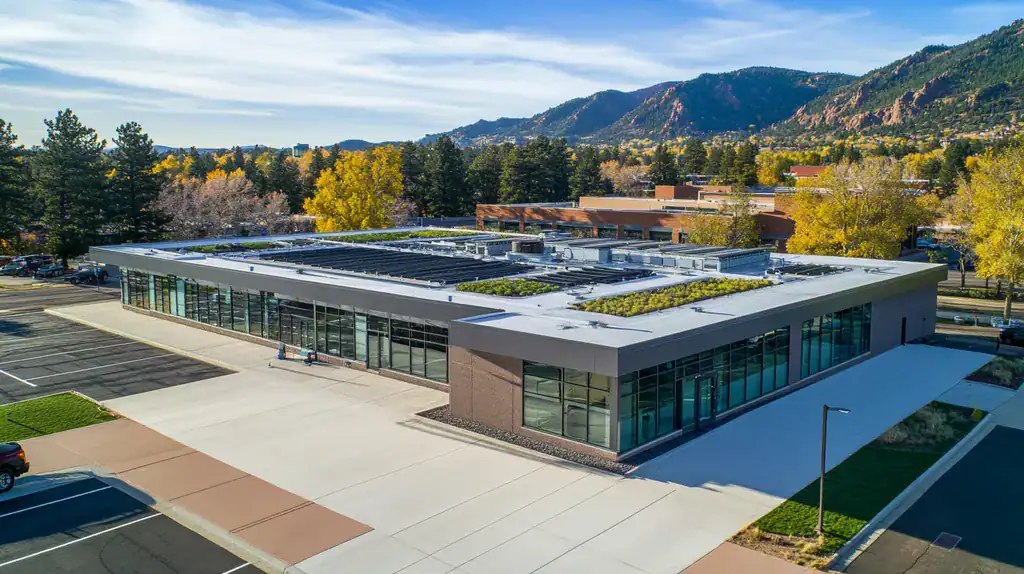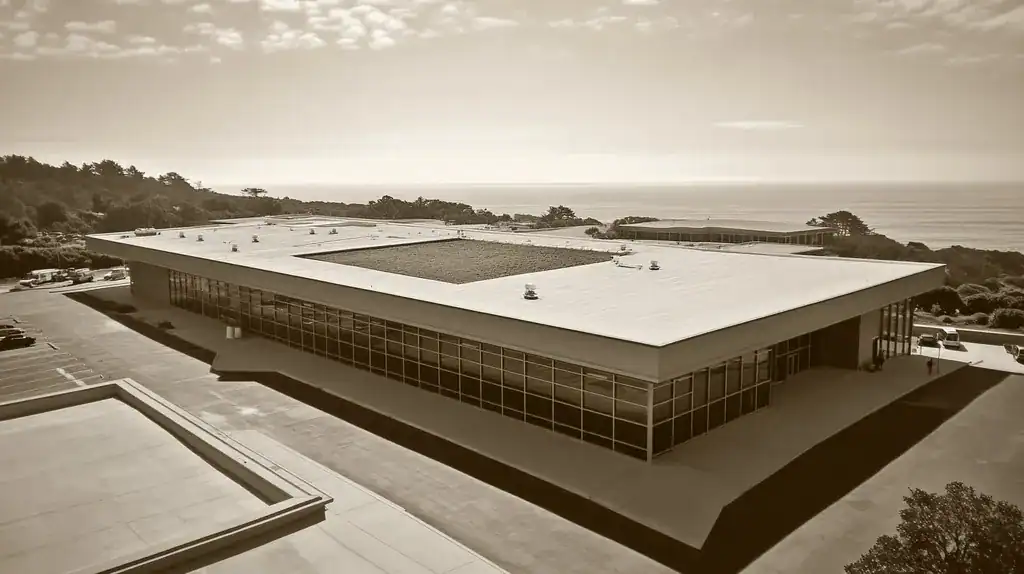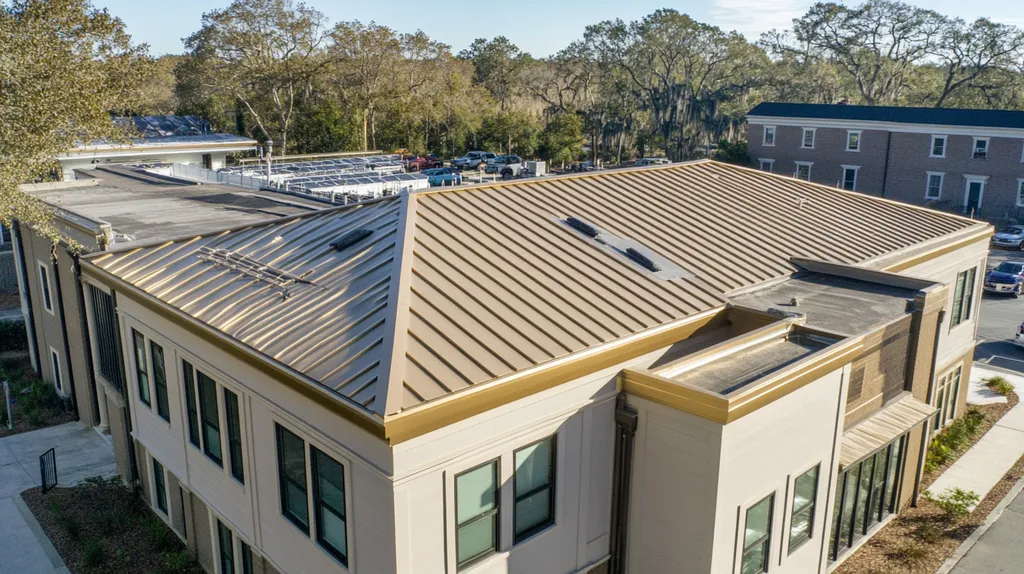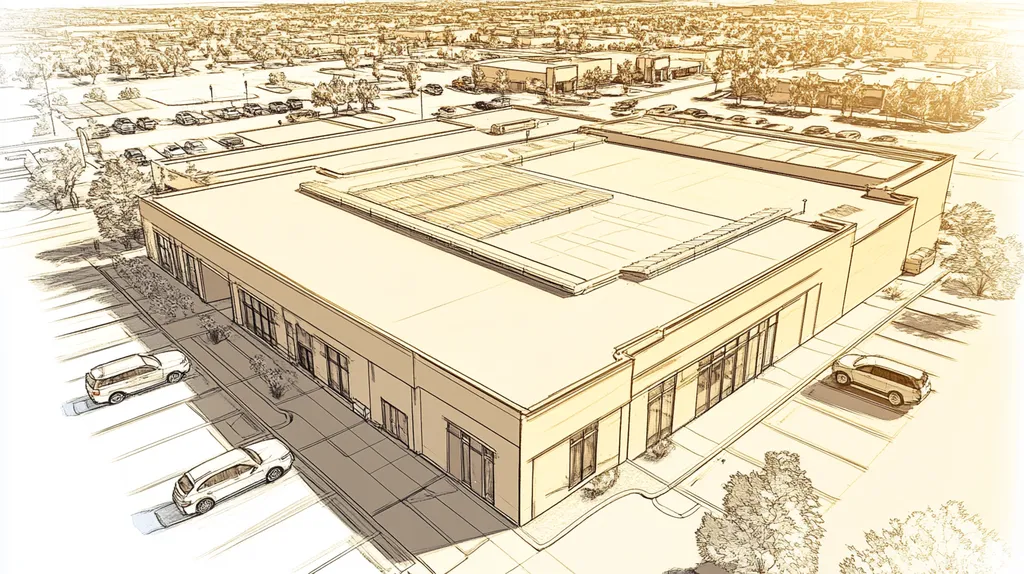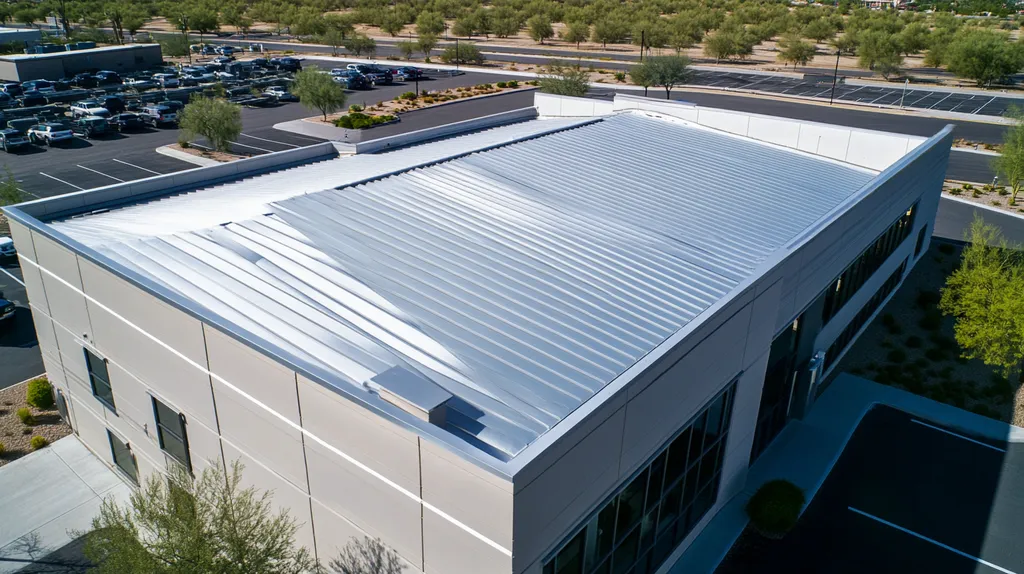In the commercial roofing industry, inadequate safety compliance leads to over 50 worker deaths annually and costs businesses an estimated $1.2 billion in penalties, insurance increases, and project delays.
As regulations grow more complex and enforcement intensifies, facility managers face mounting pressure to ensure their roof coating operations meet stringent safety standards while maintaining operational efficiency.
This comprehensive guide examines the critical components of safety compliance, from fundamental regulatory frameworks to advanced optimization strategies, providing property owners and managers with actionable insights for protecting both workers and assets.
SECTION 1: FUNDAMENTAL CONCEPTS
Safety compliance in commercial roof coating operations demands immediate attention as workplace incidents continue to rise. Recent industry data shows that roofing accidents cost businesses millions annually in worker compensation, project delays, and regulatory fines. Understanding and implementing proper safety protocols isn’t just about avoiding penalties – it’s about protecting lives and ensuring sustainable business operations.
Understanding Roof Coating Regulatory Frameworks
The regulatory landscape for commercial roof coatings integrates federal, state, and local requirements into a comprehensive safety framework. These regulations establish minimum standards for material handling, application procedures, and environmental protection.
Key federal agencies including OSHA and EPA set baseline requirements that all roofing operations must meet. State-specific regulations often impose additional requirements based on regional climate conditions and environmental concerns.
Local building codes further refine these requirements, particularly in areas with extreme weather conditions or specific environmental challenges. Understanding this regulatory hierarchy helps facility managers develop effective compliance strategies.
Regular monitoring of regulatory updates ensures continued compliance and helps anticipate necessary operational adjustments. This proactive approach prevents costly violations and maintains workplace safety standards.
Key Safety Hazards in Roof Coating Operations
OSHA standards mandate that employers must maintain comprehensive safety programs including regular worksite inspections. This requirement reflects the serious nature of roofing hazards, particularly for work conducted above six feet where fall protection systems become mandatory. (source: OSHA)
Chemical exposure presents another significant risk, with many coating materials containing potentially harmful substances. Proper ventilation and personal protective equipment are essential for minimizing these risks.
Weather-related hazards compound these challenges, making surface conditions unpredictable and potentially dangerous. Temperature extremes can affect both worker safety and coating application quality.
Equipment hazards, including lifting devices and spray systems, require specific safety protocols. Regular maintenance and inspection of this equipment helps prevent mechanical failures that could lead to accidents.
Worker Training and Certification Requirements
Effective worker training programs form the foundation of roofing safety compliance. These programs must cover both general safety principles and specific procedures for handling different coating materials.
Certification requirements vary by jurisdiction and coating type, but typically include basic safety training, equipment operation, and emergency response procedures. Regular updates to these certifications ensure workers maintain current knowledge of safety practices.
Documentation of training completion and certification status helps demonstrate compliance during inspections. This documentation should include detailed records of specific skills and safety procedures covered.
Ongoing safety meetings and refresher courses reinforce initial training and address emerging safety concerns. These regular updates help maintain a strong safety culture and ensure consistent compliance with regulations.
SECTION 2: SYSTEM COMPONENTS
Safety system components in commercial roofing represent the critical infrastructure between compliance and catastrophe. Recent Bureau of Labor Statistics data shows that roofing remains among the most dangerous occupations, with fall-related incidents causing 73% of fatalities. Proper implementation of safety systems isn’t just about meeting regulations – it’s about creating a comprehensive shield that protects workers while enabling efficient coating operations.
Fall Protection Devices and Warning Line Systems
Modern fall protection systems combine physical barriers with advanced personal protective equipment (PPE) to create multiple layers of safety. These integrated systems must work together seamlessly to prevent falls while allowing workers to perform their duties effectively.
Warning line systems require careful placement at least six feet from roof edges, with high-visibility materials that maintain their effectiveness in all weather conditions. These systems must be inspected daily to ensure proper tension and positioning.
Personal fall arrest systems require proper anchor points rated for at least 5,000 pounds per worker. Regular inspection of these anchor points and associated equipment is essential for maintaining system integrity.
Contractors working in enclosed spaces must also consider respiratory protection requirements, particularly when applying coatings in poorly ventilated areas. (source: Coatings Coffee Shop)
Roof Edge and Access Point Protective Equipment
Edge protection systems must integrate seamlessly with the building’s structure while providing consistent fall prevention. These systems should include both permanent and temporary solutions to accommodate different phases of coating work.
Access points require particular attention, as they represent transition zones where workers are most vulnerable. Proper guardrail systems must extend beyond the immediate access area to ensure continuous protection.
Loading zones and material storage areas need additional reinforcement and clear marking to prevent overloading. These areas should feature enhanced warning systems and physical barriers to control access.
Regular inspection protocols must include documentation of edge protection system conditions and immediate repair of any compromised components. This maintenance helps ensure continuous protection throughout the coating project lifecycle.
Safety Monitoring Systems and Role of Competent Persons
Safety monitoring systems must provide real-time oversight of roofing operations through a combination of human observation and technological tools. These systems should integrate weather monitoring, worker positioning tracking, and equipment status indicators.
Competent persons must maintain constant awareness of changing conditions that could affect worker safety. Their authority includes the power to halt operations when conditions become unsafe.
Documentation systems need to track both routine inspections and incident reports, creating a comprehensive safety record. This documentation helps identify patterns and prevent future incidents through targeted improvements.
Regular training updates ensure that monitoring personnel stay current with evolving safety technologies and regulations. This ongoing education helps maintain the effectiveness of safety monitoring programs.
SECTION 3: IMPLEMENTATION METHODS
The stakes for proper implementation of safety systems in commercial roof coating operations have never been higher. Recent industry statistics show that inadequate safety implementations lead to 85% of roofing accidents. Beyond the human cost, these incidents result in project delays, increased insurance premiums, and potential regulatory penalties that can cripple operations.
Step-by-Step Installation of Safety Equipment
Proper installation begins with a comprehensive site survey to identify hazard zones, access points, and necessary safety equipment placement. This assessment must account for roof geometry, existing penetrations, and potential environmental challenges.
The EPA provides detailed guidance for managing environmental compliance during coating operations, particularly regarding VOC emissions and worker protection during application processes. Regular self-audits ensure ongoing adherence to these requirements. (source: EPA)
Safety equipment installation follows a hierarchical approach, starting with permanent anchor points and guardrail systems. These primary systems create the foundation for additional safety measures including warning lines and personal fall arrest equipment.
Documentation of installation procedures, including equipment specifications and testing results, must be maintained throughout the project. This documentation serves both compliance requirements and quality assurance purposes.
Integrating Safety Systems into Coating Workflows
Safety integration begins with establishing clear zones for material staging, equipment setup, and worker movement patterns. These designated areas must account for both coating application requirements and emergency access needs.
Daily safety briefings should address specific coating tasks, associated risks, and required protective measures. These meetings ensure all team members understand their roles in maintaining workplace safety.
Implementation of a buddy system helps maintain constant safety oversight during coating operations. This approach ensures immediate response capability while promoting collaborative safety awareness.
Regular workflow assessments help identify potential safety gaps and optimization opportunities. These reviews should incorporate worker feedback to enhance both safety and operational efficiency.
Emergency Preparedness and Response Procedures
Emergency procedures must address both immediate incident response and longer-term recovery operations. This includes establishing clear chains of command and communication protocols for various emergency scenarios.
Equipment for emergency response, including first aid supplies and rescue gear, requires strategic placement throughout the work area. Regular inspections ensure this equipment remains readily accessible and in proper working condition.
Training exercises should simulate various emergency scenarios, from individual falls to large-scale evacuations. These drills help identify potential response gaps while building team confidence in emergency procedures.
Post-incident analysis protocols help prevent future occurrences by identifying root causes and necessary system improvements. This continuous improvement approach strengthens overall safety program effectiveness.
SECTION 4: MAINTENANCE REQUIREMENTS
The consequences of inadequate maintenance for commercial roof coating safety systems can be catastrophic. Industry data reveals that 78% of rooftop accidents occur where safety equipment was improperly maintained or past its service life. Beyond worker safety, systematic maintenance directly impacts insurance costs, regulatory compliance, and operational continuity – with the average maintenance-related incident costing facilities over $150,000 in direct expenses alone.
Routine Inspection Protocols for Safety Devices
Safety device inspections require a methodical, multi-layered approach that goes beyond simple visual checks. Monthly inspections must evaluate both individual components and system-wide integration, with particular attention to high-stress connection points and weather-exposed elements.
Inspection protocols should establish clear criteria for pass/fail conditions, allowing for consistent evaluation across different inspectors. These criteria must align with manufacturer specifications while accounting for site-specific environmental factors.
Weather exposure tracking helps anticipate degradation patterns and optimize inspection scheduling. Areas experiencing higher UV exposure or chemical exposure from coating operations require more frequent evaluation.
The EPA’s architectural coating standards require specific maintenance protocols for equipment used in coating application, particularly regarding VOC containment systems and protective barriers. These requirements demand thorough documentation of inspection findings and corrective actions. (source: EPA)
Repair and Replacement Guidelines for Equipment
Safety equipment repair decisions must follow a strict hierarchy based on risk assessment and component criticality. Immediate replacement is mandatory for any equipment showing stress cracks, corrosion, or deformation beyond manufacturer tolerances.
Temporary repairs should never extend beyond one inspection cycle and must include enhanced monitoring protocols. These temporary solutions require daily verification of integrity until permanent repairs can be implemented.
Replacement schedules should anticipate end-of-life dates for critical components, allowing for planned upgrades before failure risks emerge. This proactive approach prevents emergency replacements that could disrupt coating operations.
Equipment modification or repair must maintain original safety ratings and certification requirements. Any alterations require thorough documentation and testing before returning equipment to service.
Record Keeping and Compliance Documentation
Digital documentation systems must capture both scheduled maintenance activities and unexpected repairs. These records should include detailed photos, measurement data, and environmental conditions at the time of inspection.
Compliance documentation requires maintaining an unbroken chain of evidence for all safety system components. This includes installation dates, inspection history, repair records, and certification renewals.
Integration with facility management systems helps ensure maintenance schedules align with coating project timelines. This coordination prevents conflicts between safety system maintenance and coating application windows.
Archive protocols must preserve records beyond minimum regulatory requirements to support long-term trend analysis. This historical data proves invaluable for optimizing maintenance schedules and justifying safety system investments.
SECTION 5: PERFORMANCE METRICS
Performance metrics in commercial roof coating safety represent the difference between prevention and catastrophe. Recent industry data shows that roofing remains one of the deadliest construction trades, with falls accounting for over 30% of workplace fatalities. Proper measurement and tracking of safety metrics isn’t just about regulatory compliance – it’s about creating a comprehensive framework that protects workers while ensuring operational efficiency.
Assessing Safety Compliance through Audits
Effective safety audits require systematic evaluation of all roof coating operations, from material handling to application procedures. These assessments must identify both immediate hazards and potential risks before they manifest as incidents.
Documentation protocols should capture not only compliance status but also trending data that reveals developing safety concerns. This information helps facility managers prioritize corrective actions and allocate resources effectively.
Third-party audits provide valuable external perspective and help validate internal findings. These independent reviews often identify overlooked issues that internal teams may have normalized.
Regular audit scheduling ensures continuous monitoring rather than sporadic evaluation. This consistent oversight helps maintain safety standards while demonstrating commitment to regulatory compliance.
Key OSHA Standards for Roof Coating Safety
Fall protection standards represent the cornerstone of roof coating safety requirements. Covers protecting workers from skylights and roof openings must support at least twice the weight of workers, equipment, and materials that may be imposed on them at any time.
Warning line systems provide essential protection on larger roofs, while safety monitoring systems may suffice for smaller projects. These systems must be properly maintained and regularly inspected to ensure continued effectiveness. (source: OSHA)
Chemical exposure limits and ventilation requirements demand particular attention during coating applications. These standards protect workers from both immediate and long-term health effects.
Weather-related work restrictions help prevent accidents caused by environmental conditions. Clear guidelines regarding wind speeds, precipitation, and temperature ranges must be established and enforced.
Measuring the Effectiveness of Fall Prevention Programs
Quantitative metrics including incident rates, near-miss reports, and inspection findings provide essential data for evaluating program effectiveness. These measurements help identify trends and anticipate potential safety issues.
Worker feedback mechanisms must capture both formal and informal input about safety system performance. This ground-level perspective often reveals practical issues that may not be apparent during standard inspections.
Training completion rates and knowledge retention testing help gauge program comprehension. Regular assessments ensure workers maintain current understanding of safety requirements and procedures.
Cost-benefit analysis of safety investments provides concrete evidence of program value. This data helps justify continued funding while demonstrating the financial impact of prevention versus incident response.
SECTION 6: OPTIMIZATION STRATEGIES
Optimizing safety compliance in commercial roof coating operations has become increasingly critical as regulatory scrutiny intensifies. Recent industry data shows that facilities with optimized safety programs experience 65% fewer compliance violations and save an average of $200,000 annually in prevented incidents and penalties. Yet many organizations continue to struggle with implementing effective optimization strategies, particularly in areas of crew engagement, technology adoption, and continuous improvement protocols.
Enhancing Safety Culture Among Crews
Building a proactive safety culture requires systematic engagement at every level of roofing operations. Daily toolbox talks and pre-task planning sessions help crews internalize safety protocols while encouraging active participation in compliance initiatives.
Recognition programs that reward compliance excellence create positive reinforcement cycles. These programs should celebrate both individual achievements and team milestones in maintaining safety standards.
Peer safety committees empower workers to take ownership of compliance initiatives. These committees provide valuable ground-level insights while fostering a collaborative approach to safety optimization.
Clear communication channels between management and crews ensure rapid response to emerging safety concerns. This open dialogue helps prevent small issues from escalating into serious compliance violations.
Adopting New Technologies for Improved Protection
Advanced monitoring systems now provide real-time tracking of environmental conditions and worker safety parameters. These systems can automatically alert supervisors when conditions approach compliance thresholds.
The EPA’s National Volatile Organic Compound Emission Standards provide specific guidelines for implementing coating technology that enhances both worker safety and environmental compliance. These standards emphasize the importance of proper equipment selection and maintenance protocols. (source: EPA)
Digital documentation platforms streamline compliance tracking and reporting requirements. These systems provide instant access to safety records while ensuring consistent documentation across all coating operations.
Wearable safety devices monitor worker exposure to harmful substances and environmental hazards. This technology enables proactive intervention before exposure levels reach dangerous thresholds.
Continuous Improvement through Training and Feedback
Structured training programs must evolve alongside changing regulations and industry best practices. Regular skills assessments help identify areas where additional training can enhance compliance performance.
Feedback mechanisms should capture both quantitative compliance metrics and qualitative worker insights. This comprehensive approach helps identify systemic issues that might otherwise go unnoticed.
Cross-training initiatives ensure broader understanding of safety requirements across different coating applications. This versatility helps maintain compliance even when regular crew members are unavailable.
Performance tracking systems should measure both leading and lagging indicators of safety compliance. These metrics guide resource allocation while demonstrating the effectiveness of optimization efforts.
Looking Ahead
With roofing accidents costing the industry over $1.2 billion annually and claiming dozens of lives, the stakes for proper safety compliance have never been higher.
The integration of advanced monitoring technologies, stringent documentation protocols, and enhanced training programs represents the future of commercial roof coating safety.
Organizations that prioritize comprehensive safety compliance through systematic implementation of the strategies outlined in this guide position themselves to avoid devastating penalties while protecting their most valuable assets – their workers.
As regulatory oversight continues to intensify and coating technologies evolve, maintaining robust safety compliance won’t just be about meeting standards – it will become a fundamental determinant of business survival in the commercial roofing sector.
FREQUENTLY ASKED QUESTIONS
Q. What is required for compliance in commercial roof operations?
A. Compliance requires understanding federal, state, and local regulations. These include safety protocols for material handling and environmental protection, ensuring that business operations are not only legally compliant but also protect the workforce. Regular updates on regulations are essential to maintain compliance and safety standards in roofing projects.
Q. How can I implement safety systems for commercial roofs?
A. Start with a site survey to identify hazards and then install safety equipment such as fall protection systems and warning lines. Engage your crew in safety protocols through regular training and pre-task meetings, ensuring everyone understands their roles and responsibilities in maintaining a safe working environment.
Q. What should be included in safety maintenance for industrial roofs?
A. Conduct routine inspections and maintenance on all safety devices, ensuring they meet operational standards. Keep detailed records of inspections and repairs, including any adjustments made to equipment. This tracking helps prevent operational disruptions and maintains compliance with safety regulations.
Q. How do I assess safety compliance for my commercial roof?
A. Perform systematic safety audits that cover all aspects of your roof operations. These audits should identify hazards, compliance gaps, and areas needing improvement. Tracking safety metrics over time helps you anticipate risks and allocate resources effectively to maintain a safe working environment.
Q. What are key performance metrics for industrial roofing safety?
A. Important metrics include incident rates, near-miss reports, and audit findings. Regularly measuring these metrics helps identify trends and areas for improvement in your safety programs. Worker feedback can also provide valuable insights into practical safety issues that may not be reflected in numeric data.
Q. How can I enhance safety culture for commercial roofing crews?
A. Foster a proactive safety culture through daily toolbox talks, recognition programs, and peer safety committees. Engage your crew in discussions about safety and encourage suggesting improvements or voicing concerns. Clear communication between management and workers can significantly enhance your overall safety culture and compliance efforts.
Q. What role does worker training play in commercial roof safety?
A. Worker training is vital for ensuring compliance with safety protocols and regulations. Regular training sessions equip workers with the latest safety practices related to their tasks and the proper use of protective equipment. Continuous education promotes a safe working environment and helps prevent accidents on the job site.


